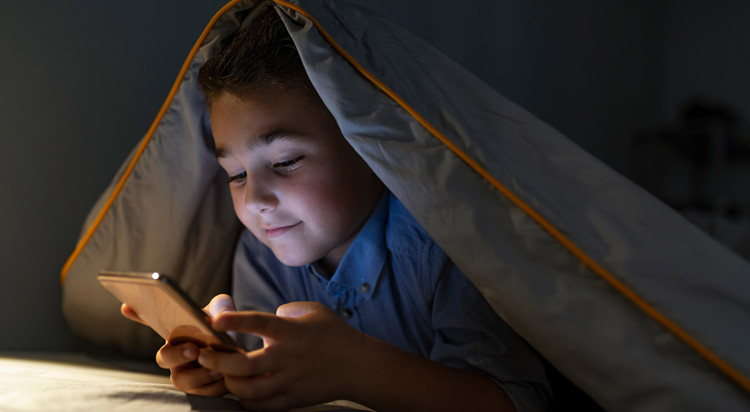
Short-sightedness in kids
What you can do today to protect your kid’s vision for tomorrow

10 June 2021
Did you know there are ways you can manage your child’s existing short-sightedness (myopia) or even prevent it from developing? This could be even more important since the pandemic, with studies suggesting that spending more time on screens and less time outdoors may be increasing short-sightedness in our kids. (For more on that, check out this article by Optometry Australia.)
Risk factors for short-sightedness
Short-sightedness tends to get worse more quickly when kids are young (compared to older teenagers and adults), so getting on top of it early is key. Your child may be at risk of progressive short-sightedness if:
- Their myopia was first noticed before the age of 9
- Your family is of Southeast Asian heritage
- One or both parents are short-sighted
- They’ve been diagnosed with a binocular vision disorder (where the eyes don’t work together).
Why getting on top of eye issues is important
While kids in glasses look super cute, that’s not the only reason to persuade them to wear their glasses. If kids’ short-sightedness isn’t recognised (and treated), it can stop them learning to the best of their ability and enjoying life to the full.
Just as important (and less known) is the fact that being short-sighted also puts kids at risk of developing other health conditions later on, which having regular eye exams and managing vision problems now can help reduce. These include:
- Cataracts
- Detached retina
- Myopic macular degeneration – a disease which can cause vision loss
- Glaucoma.
Things you can do
Although some things are out of your control, there are steps you can take to reduce your kid’s risk of developing short-sightedness, or prevent their eyesight from getting worse in the future.
Go out and play!
Spending time outdoors – like playing in the backyard or going for a walk – for at least 90 minutes a day reduces a child’s risk of becoming short-sighted. While it’s not proven that time outdoors will slow the progress of existing short-sightedness, many experts still recommend it for kids with myopia. Plus, think of all the other benefits for their health and wellbeing!
Reduce near work
Studies have found the more time kids spend focusing on close-up things (computers, screens and books), the more they’re at risk of developing short-sightedness. Experts recommend keeping near work to 2 hours or less per day (though that may be hard if they’re a conscientious student!), while also teaching them good habits to prevent digital eye strain. Like time outdoors, reducing near work hasn’t yet been shown to reduce existing short-sightedness, but many optometrists still recommend it for general eye health.
Get an eye check
If you notice your child is squinting to see things or any other signs of vision problems (or even if you just want to make sure there are no problems), get them checked out. An eye test (every three years) is covered by Medicare at our Health Centres, so book an appointment with one of our optometrists.
Tell them how cool they look in their specs!
It’s proven that short-sightedness progresses more quickly in kids whose eyesight is under-corrected or isn’t corrected at all. Contrary to old wives’ tales, wearing glasses doesn’t weaken eyes, and not wearing them can cause more harm. As much as they can, your child should wear their glasses all the time.
There’s a lot an optometrist can do to help with your kid’s short-sightedness, including prescribing multifocal or bifocal glasses, multifocal contact lenses, rigid lenses or even pharmaceutical eye drops.
To see an optometrist about your child’s vision, book an appointment at a Health Centre or one of our optical providers.


